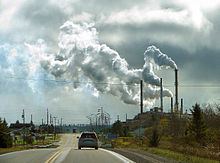Country Canada Time zone EST (UTC-5) Population 1,519 (2011) | Website www.englehart.ca Local time Friday 3:29 PM Area code Area codes 705 and 249 | |
 | ||
Weather -18°C, Wind NW at 24 km/h, 45% Humidity | ||
Englehart (Canada 2011 Census population 1,519) is a town in the Canadian province of Ontario, located on the Englehart River in the Timiskaming District.
Contents
Map of Englehart, ON, Canada
History
The Town of Englehart was created by the building of the T.&N.O Railway and named after Chairman Jacob Lewis Englehart. It was incorporated as the Town of Englehart in January 1908, as a half-way divisional point between North Bay, Ontario and what became Cochrane, Ontario, where the T & N O Railway met with the new Transcontinental Railway line (now the CNR) being built west from Quebec City across the north to the Western Provinces, creating the town of Cochrane.
In 1905, Jacob Lewis Englehart, born 2 Nov 1842 near Cleveland,Ohio, became a key figure in the development of the railway north of North Bay in Ontario. A successful business from Petrolia nearing the current age of retirement, he was appointed in 1905, by the Premier of Ontario, to the Ontario Commission in charge of building and operating the Temiskaming and Northern Ontario Railway (T&NO), which would, about 1945, become the Ontario Northland Railway. He served as Chairman of a new 3-man Commission from 1906 until the fall of 1919, when he retired after the United Farmers Organization of Ontario won their first and only four-year term in the Province of Ontario. He died at York, now Toronto, in 1921 and was buried at Petrolia.
The new community of Englehart began to take shape with the construction of the line's first major bridge at the Charlton branch of White River (now the Englehart River). Initially, there was a construction site for a high level trestle known as White River Crossing, which opened in 1906. The Commission decided to develop a planned town on the west side of the river, from 1906-1908, as a half-way divisional point on the railway.
The railway was particularly central to the settlement and development of New Ontario (now N.E. Ont.); that is, until the first gravel road,(the Ferguson Highway, now part of Highway 11) was opened in 1927 north from North Bay to New Liskeard in the Temiskaming District, with future extensions north and west as the initial Trans-Canada Highway route.
Jacob Lewis Englehart, was a successful oil merchant from Petrolia, Ontario, first as a fairly young refiner of oil-to-kerosene for the new lamp replacing the whale oil lamp. -He came to Canada West (now Ontario) from New York City in 1865, about the end of the American Civil War 1860-1865, prior to Confederation in 1867, to seek his fortune in the petroleum field; he had observed from Cleveland and New York the digging and refining to kerosene, in 1858, of the first Oil Well at Oil Springs (near Petrolia), between London and Sarnia. He became very successful, first as a young refiner of oil-to-kerosene at London and Hamilton; then he built the large successful refinery, the Silver Star, at Petrolia, and became an oil well owner too. -Through two rounds of refining amalgamation, Jake is credited with being the founder of Imperial Oil Ltd., to compete with Rockefeller's Standard Oil; and then to become a subsidiary of Standard Oil, who moved the headquarters of Imperial Oil to Sarnia (ESSO) Jake stayed, as the largest shareholder, with Imperial Oil in a high-level position, for years.
-The T & No was eventually extended north to Moosoneee on James Bay in the depression years of the 1930s. -Today, Englehart's importance as a railway town has diminished, and the biggest employer is an oriented strand board (OSB) facility built by Grants Forest Products, which was sold to Georgia Pacific in early 2010 as a result of the American led recession of 2008.
Media
CJBB-FM broadcasts from Englehart.
Transportation
The Englehart railway station was served by the Northlander until the passenger service was ended in September 2012. Rail passenger service was replaced by increased bus service, also provided by Ontario Northland Railway. Englehart is located on Ontario Highway 11, part of the Trans-Canada Highway system.
On March 31, 2007, an Ontario Northland Railway freight train derailed about 15 kilometres (9.3 mi) north of Englehart, spilling an estimated 100 tonnes of sulfuric acid into a creek feeding the Blanche River.
